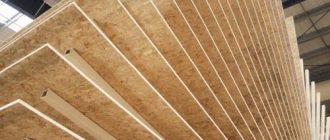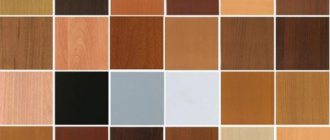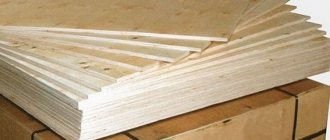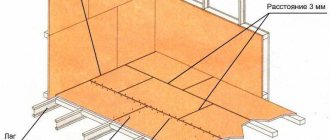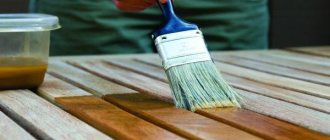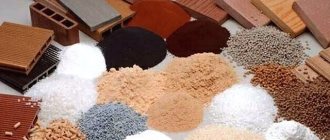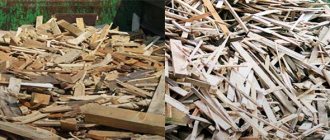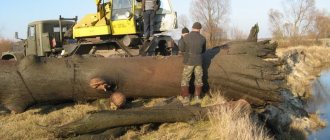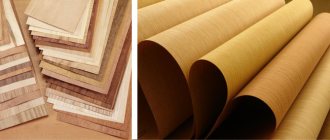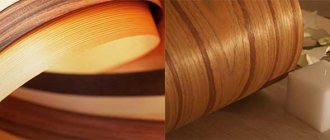not always ready to answer the question of what a fiberboard is . But despite this, the material already has a rather impressive history, dating back almost a century.
Although, for the sake of historical justice, it can be considered much older. After all, it is a direct heir to clay or straw “bricks”, which served as building material for the construction of houses, while possessing all the necessary properties: sufficient load-bearing capacity, low thermal conductivity, high sound insulation properties.
New material, old friend
To produce fiberboard you need: wood “wool”, which is ordinary shavings; Portland cement grade 500; an astringent component, which is sodium silicate of low concentration, that is, ordinary liquid glass or calcium chloride.
In percentage terms, wood chips account for 60%, cement approximately 39.5%, and the remaining half a percent is binder.
At the first stage, wood “wool” is impregnated with sodium silicate or another binder; at the next stage, it is filled with a cement solution and pressed into molds, the dimensions of which are regulated by GOST, but production of products according to specifications is also allowed. Standard GOST dimensions: length 2.4 and 3 m, width - 0.6 and 1.2 m, and thickness can vary from 0.03 to 0.15 m.
What is fiberboard? Video:
What is fibrolite
The material is fibrolite - a combination of wood fiber and cement. The latter was used as a binder in that very year 1920. This worked for the popularity and demand of the material. For cement in fiberboard it is approximately 40%. The composition and properties of the material are regulated by GOST 8928-81. Accordingly, in stores, fiberboard is often called cement-bonded particle boards. Fiberboard Wood fiber makes up approximately 60% of fiberboard. Otherwise, the filler is called wool, since the fiber is thin and long. Unlike ordinary shavings, the material does not exceed half a millimeter in diameter and can be elongated by 5 centimeters.
A special machine twists the “threads”, producing something like yarn. Wood wool is decorative, so it often decorates display cases, chests with expensive wine, and gift baskets with fragile items in them. In the cement mass, wood wool gives a rough surface. In addition to cement, wood wool in fiberboard is bound with calcium chloride. This is a mineralizer. Liquid glass can be added as an additional binder and strengthener. There is a material related to fiberboard - wood concrete. Its composition is the same.
Hence the confusion of concepts. However, the ratio of components in wood concrete and the characteristics of the components are different. Cement accounts for no more than 20%, and often 10%. Small wood chips can be used in wood concrete and a 10% admixture of crushed bark is acceptable. The wood material for wood concrete is crushed slabs and other scraps of healthy, round wood. Fibrolite is made from the latter.
Characteristics of fiberboard
The fairly widespread use of fiberboard is determined by high, and sometimes unique, performance characteristics, among which special attention should be paid to the following:
- despite the fact that most of the slab is made up of wood chips, this material is fireproof due to special impregnation with binders;
- for the same reason, the material has fairly good moisture resistance and can withstand even constant exposure to a humid environment;
- the ability of fiberboards to withstand various deformations and movements, thanks to the wood “wool”, which in this case successfully copes with the function of a damper, and the cement shell provides them with stability;
- fiberboard boards are biologically inactive and are not subject to either rotting or infection by microorganisms or insects;
- low thermal conductivity coefficient;
- high sound insulation ability;
- environmental friendliness;
- frost resistance - withstands at least 50 cycles;
- durability – service life of at least 50-70 years.
In addition, you should pay attention to the following points:
- the relatively light weight of fiberboards, which greatly facilitates its transportation and installation, which does not even require the use of special equipment;
- lightness and pliability for processing with traditional tools, the same as for wood;
- high installation speed due to the large size of the products.
Also, one indisputable advantage of fiberboard is its lower price compared to similar materials, which it often surpasses in many respects.
It should be noted that modern fiberboard wall panels are somewhat different from those that were used even several decades ago. Many of their shortcomings have been overcome thanks to the advent of modern technologies and the use of more efficient binder components.
For example, this concerns moisture resistance, which was quite low, which led to a deterioration in the quality indicators of the material and subsequent destruction, in which various pathogenic microorganisms played a role.
Fiberboard sip panels
Today, an innovative product occupies a worthy place in the construction market: a SIP sandwich panel using fiberboard boards called Green Board. The panel has three layers:
- one layer of polyurethane foam insulation
- two fiberboard boards.
Such panels are used in the process of creating internal and external walls, stairs, partitions, as well as load-bearing structures. In addition, such material is quite in demand in the construction of cottages, bathhouses, garages, extensions and gazebos, attic extensions in finished buildings made of wood, brick, and concrete.
Such sip panels are environmentally friendly and safe; they are also called “improved wood”. Moreover, the cost of such a building is almost no different from using SIP panels with OSB, but the durability will be higher.
GREEN BOARD fiberboards as part of a sip panel provide the following advantages:
- complete environmental friendliness, which is guaranteed by the absence of toxic compounds in the manufacturing process of GREEN BOARD
- increase in the service life of the entire building structure due to the increased level of durability of GB-3 slabs, which reaches over 100 years. Exceptional innovative technologies enable the material to increase its mechanical properties throughout the entire period of operation.
- GB-3 slabs have fire safety class G1, which is assigned to low-flammability materials. As a result, the overall fire safety of the building increases. Note that the OSB board belongs to class G4, which is assigned to highly flammable materials
- the use of GREEN BOARD fiberboard in SIP panels increases the level of ventilation of the entire building. This indicator is similar to wooden buildings. Fiberboard boards are distinguished by a special system for regulating indoor humidity
- improving the biological resistance of the building. The material from which GB-3 slabs are made, even in humid climates, does not rot, therefore, fungi, pathogenic bacteria, rodents and insects will not multiply there.
GREEN BOARD fiberboard boards in accordance with GOST 8928 are created by pressing a mixture of specially prepared wood-wool chips in accordance with GOST 5244. Chip parameters:
- length 400-500 mm
- width 4-7 mm
- thickness 0.25-0.5 mm.
Portland cement of a grade of at least 400 according to GOST 10178 is added to the shavings, as well as chemical additives such as calcium chloride, liquid glass, lime, aluminum sulfate and water.
Areas of application of fiberboard
Thanks to the presence of wood chips in the composition of fiberboard boards, it is possible to achieve high load-bearing capacity of the material, as well as strength characteristics, especially when the material is subjected to compression and bending. It is thanks to this feature that fiberboard did not allow itself to be forgotten, as it was often used as permanent formwork in monolithic construction.
But it should be noted that this material finds its application at different stages of construction, and can be used to achieve completely different goals, which, however, often complement each other.
So, fiberboard can be:
- permanent formwork for foundations, especially during the construction of low-rise buildings;
- thermal insulation layer, including for insulation of floors, ceilings and interfloor ceilings in industrial and residential premises;
- finishing cladding for a frame building, providing for subsequent decorative finishing;
- as frameless structures, for example, internal, load-bearing partitions;
- as an effective soundproofing layer.
Fiberboard boards differ from each other not only in size, but also in density, which determines their scope of application:
Products:
- with low density (up to 570 kg/m3) – are used as heat and sound insulating materials;
- with medium density (on average about 800 kg/m3) are mainly used as enclosing structural elements;
- with high density (from 1400 kg/m3 and above) - for carrying out work on the manufacture of complex fencing structures with high load-bearing capacity.
Special markings indicate what material is in front of you, for example, F 500 means that fiberboard has a density ranging from 450 to 500 kg/m3.
Fiberboards for permanent formwork, covering floors, walls, roofs, heat and sound insulation
There are so many building and insulating materials on the modern market that it is not easy to understand them right away. To choose from this set one product that will optimally solve a specific problem and also have an affordable price, you need to familiarize yourself with the entire range of offers. Our focus today is fiberboard
Fibrolite is a board material made from wood fibers (the so-called wood wool - long and thin ribbon-like shavings), a binder and a small dose of mineral additives (0.2%). The latter are necessary to neutralize water-soluble sugars contained in wood, which negatively affect the properties of the cement mixture. But the resinousness of the tree only benefits the fiberboard, increasing the strength of the material. Thus, the best quality slabs are obtained with fiber filler from pine and spruce; aspen, poplar and other soft woods are also used.
In the classic recipe, Portland cement M500 acts as a binder. The slabs are molded under pressure, steamed to accelerate hardening and dried until they reach a moisture content of 12–17%. The result is an environmentally friendly product that first entered the modern market under the GB (Green Board) brand and set the standards for the production and classification of a new generation of fiberboard. (Note that today a material with a magnesium binder (magnesium oxide) is also produced. It has physical characteristics similar to cement fiberboard, but does not belong to the GB category.)
The “prototype” of modern fiberboard began to be produced in the USSR back in the 20s of the last century. Its production was very labor-intensive, wood raw materials (fiber) did not undergo proper preliminary preparation, and the products themselves had an uneven structure, which negatively affected the properties of the material. Today's technologies have made it possible to overcome these shortcomings and bring products to a qualitatively new level.
Properties of fiberboard
The boards do not emit harmful substances or odors, therefore they are suitable for indoor use for any purpose (including those with increased sanitary requirements), and can be safely disposed of. Despite the significant woody component, which is 60% of the total mass, they are not susceptible to biological damage and do not attract rodents and insects. Fibrolite is an effective heat and sound insulator.
Depending on the density, its thermal conductivity varies from 0.06 to 0.17 W/(m K); for comparison: for pine and spruce it is 0.09–0.18 W/(m K). And the noise absorption coefficient is 0.8, which ensures a reduction in acoustic load by 20–23 dB (see GOST 23499-79 “Sound-absorbing and sound-insulating building materials and products. Classification and general technical conditions”).
The water absorption of fiberboard is about 40–50%, and it swells by no more than 4–6%, but the slabs actively absorb water only if they are literally immersed in it. The material quickly releases the absorbed moisture without losing its thermal insulation properties, without settling, caking, or warping.
This explains its good frost resistance (F50). And yet, it is recommended to protect fiberboard from direct contact with atmospheric moisture, as well as when used in “wet” rooms, with a layer of water-repellent plaster or paint. Moreover, the coating compositions must provide it with the ability to “breathe”, since the material is vapor permeable (0.03–0.15 mg/(m h Pa)).
Fiberboard belongs to the category of low-flammable, low-flammability materials.
It resists flame propagation, emits little smoke with low toxicity (groups D1 and T1), maintains shape stability when exposed to high temperatures and prevents the transfer of extreme thermal loads to surrounding structures. Fire hazard class - KM1.
Fiberboard combines the environmental friendliness of natural wood and the strength of concrete. At the same time, having absorbed the advantages of wood, it compensates for such disadvantages as flammability, low moisture and bioresistance, tendency to shrinkage and cracking, and the possible presence of hidden defects
Fiberboard boards of different densities
The strength properties of fiberboard are determined by the density indicator: the higher it is, the more “hardy” it is.
There are other interdependencies: with increasing density, the thermal insulation abilities of the material deteriorate, but at the same time it absorbs less water. Low-density slabs (250–570 kg/m³) are designed for insulation, medium-density (600–950 kg/m³) for structural insulation, and high-density (up to 1400 kg/m³) for structural slabs. The elastic modulus of the last group of slabs is at least 2000 MPa, and the flexural and compressive strength is at least 12 and 15 MPa, respectively. Such indicators are explained, in particular, by the long length of the “wood wool” fibers and their strictly horizontal layout in the body of the material, which contributes to the uniform distribution of impact loads over it, and also protects it from the appearance of cracks and tears.
Types of products
Products are produced in a wide range of thicknesses (from 10 to 100 mm) in a variety of formats (GOST standard 600 × 3000 mm). The weight of the sheets is relatively small - approximately from 16 to 67 kg, so working with them does not require lifting mechanisms. The material easily lends itself to wood cutting tools and holds fasteners firmly: for example, at a density of 600 kg/m³, slabs can withstand a pullout force of over 20 N/mm, at 950 kg/m³ - 50 N/mm, and at 1050 kg/m³ - 77 N/mm. Fiberboard sheets are attached to solid wooden or frame bases with nails or self-tapping screws, and to brick and concrete bases - with expansion anchors. The joints are filled with cement mortar. The slabs have the correct geometry, smooth surfaces, and the finishing compounds adhere perfectly to them even without prior priming.
Fiberboard is durable (will last at least half a century) and, importantly, can be easily repaired: dents, chips and other damage can be repaired with ordinary building mixture or cement-based glue
Fiberboard acoustic panels
A special type of product - fiberboard acoustic panels
density 350–600 kg/m³. They can come in smaller formats (e.g. 600 x 600, 600 x 1200 mm) and their standard thickness is 14–25 mm. This is a decorative insulating material that provides effective noise insulation and is used for finishing interior walls, ceilings and partitions. The panels are made on the basis of white cement and painted with water-soluble acrylic paints by spraying in the colors of the RAL, Dulux, etc. palette. The edges of the products can be straight, chamfered, with a stepped rebate, the surface can be textured. They are attached to the sheathing or, when hemming the ceiling, to a profile suspended frame using self-tapping screws or clamps.
The cost of fiberboard depends on the format, thickness and density of the slab and ranges from approximately 250 rubles/m² (3000 × 600 × 14 mm, 600 kg/m³) to 600 rubles/m² (3000 × 600 × 18 mm, 1050 kg/m³ ) or up to 950 rub./m² (2800 × 600 × 100 mm, 300 kg/m³). The price for the same products per piece is 450, 1100 and 1600 rubles. respectively. Acoustic panels will cost from 500 to 2500 rubles/piece.
Application of acoustic slabs
Application of fiberboard
Areas of application of fiberboard boards
Fibrolite covers the same areas of application as plasterboard, OSB, plywood, glass magnesite, wood-fiber boards, etc. Although such boards are heavier, they are less “water-resistant”, do not lose strength when wet, and do not are subject to deformation, delamination and warping, provide a higher level of sound insulation. If we consider fiberboard as insulation, then in a number of properties it is superior to stone wool (for example, it dries faster, does not increase thermal conductivity when moistened) and certainly outperforms PPS in terms of fire safety, vapor permeability and resistance to UV radiation.
Fiberboard slabs of appropriate density and hardness are used for permanent formwork in the construction of monolithic facades and foundations, for cladding with the function of additional heat and sound insulation of internal walls and partitions, in the construction of roofs, ceilings, basements and interfloor ceilings. In addition, sandwich panels are made from fiberboard with a mineral wool layer for the construction of energy-efficient frame houses.
Fiberboard slabs in the roof structure
Fiberboards as permanent formwork
Fiberboard slabs in the floor structure of the 1st floor
Fiberboard slabs in floor construction
Fiberboards in wall construction
Use of fiberboard in monolithic construction
The use of fiberboard as permanent formwork can significantly reduce the costs of constructing monolithic structures. In addition to the fact that it is possible to reduce the labor intensity of the process by almost half, the issue of additional insulation of the structure is also resolved.
And if work is carried out in the cold season, you can reduce the need for special heating of concrete, since fiberboard formwork copes well with this.
Fixed formwork made of fiberboard boards, video:
Specifications
A standard slab has a length of 240 or 300 cm, a width of 60 or 120 cm, a thickness of 3–15 cm. Many manufacturers produce slabs of other sizes: 3000 × 600, 2700 × 1250, 3200 × 1250 or 3600 × 1200 mm, thickness 10, 25 , 50 mm.
In stores, fiberboard products are sold under the name “Cement-bonded particle boards (CPB).” Depending on the density of the material in dry form, they are divided into several grades. FB characteristics are presented in the table.
| Brand of fiberboard | Slab density, kg/m3 | Scope of use |
| F-300 | 250–300 | Thermal insulation |
| F-400 | 350–450 | Thermal and sound insulation |
| F-500 | 450–500 | Permanent formwork |
Fiberboard panels to solve sound insulation problems
It should be noted that the use of fiberboard slabs allows the construction of not only straight monolithic structures, but also curved ones. To do this, first, parts and elements of the required shape and size are cut from slabs, and then the formwork is laid in accordance with the project.
Fiberboard is effective in solving issues related to reducing the negative impact of noise and various sounds that have become constant companions of modern people, especially those living in a metropolis.
This material has a unique ability to absorb noise due to its chaotic cellular structure and is most effective in combating high-frequency sounds. Can be used to soundproof both walls, floors and even ceilings.
Fiberboard panels in low-rise construction, video:
Types of fiberboard
There are two related classifications of fiberboard. The first divides the slabs into grades F300, F400 and F500. The number is an indicator of density. It is measured in kilograms per cubic meter. The second classification takes into account not only the density, but also the strength of fiberboard. There are already 6 brands: GB-1 - low density GB-2 - medium density and equally average strength GB-3 - high density and strength GB-4 - a combined board in which loose and dense layers alternate GB1L - minimum density GB3F - maximum density, with decorative coating Decorative fiberboard can be without coating. Colored Portland cement can be used to hold the shavings together. Due to it, the slabs are pinkish, gray-purple, blue, and beige.
Advantages and disadvantages
The main advantages of fiberboard include:
- increased level of fire resistance
- it is a fire-resistant building material
- high level of moisture resistance of modern fiberboard boards
- increased resistance to biological agents
- rather low level of thermal conductivity (thermal conductivity coefficient: 0.08…0.1 W/m K)
- high sound insulation rates
- long period of operation (50 - 60 years)
- high bending strength. Fiberboard is used to create interior partitions
- small mass
- ease of processing. Fiberboard is easy to cut and process. Nails are driven into it well and can be plastered.
- speed of installation
- low price.
Houses made of fiberboard have the following disadvantages:
- destruction during prolonged exposure to temperature and humidity conditions of use, therefore, the thermal insulation parameters are reduced. Annual cycles of freezing and thawing lead to negative consequences over time
- if the manufacturer does not follow the production technology and skimps on something, the material will be susceptible to fungal attack. Always ask the seller for a quality certificate.
Limitations in use and advantages of fiberboard boards
Permanent formwork can be used both in individual low-rise construction and in the construction of multi-storey buildings. The material is not recommended for use in climates with high humidity and frequent temperature changes. The main advantages of fiberboard:
- 6 times lighter than concrete mixtures;
- resistant to fire;
- retains heat well;
- frost-resistant;
- prevents noise penetration;
- reduces construction time.
By correctly using the advantages of fiberboard material, you can achieve significant service life of the building.
